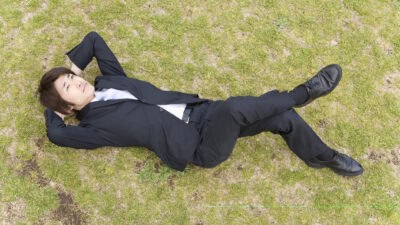I regularly get asked my opinion on matters investing.
Or, at least, the markets.
I make that distinction because some of the questions aren't really about 'investing' as such.
Investing should be a long term pursuit; an effort to create long term value.
And that's where I focus my time, energy and attention.
Partly, because I hope I'm decently good at it.
But also because asking me where the ASX is going this week, or this month, or by Christmas is just not a question I think can be reliably answered — by me or anyone else.
Because in the short term the market is fickle.
Does anyone really know what mood traders will be in over the next 10 days?
I doubt it.
It's hard enough to know what mood the market is in, today, let alone tomorrow, or next week.
And by Christmas?
It's just not — in my view — knowable.
Even many of those who accurately predicted the impact of COVID missed the market reaction (a short, sharp slump, followed by a short, sharp, recovery of most of those losses).
I'm not going to say it's a waste of time trying to guess but…
Ah, bugger it. I'll just say it:
It's a waste of time.
And so?
And so, I try to spend my time focussing on two things:
1. The long term; and
2. Probabilities, not predictions
You're never going to be right 100% of the time.
Probably not even 80% of the time.
As US fund manager Peter Lynch famously remarked:
"In this business, if you're good, you're right six times out of ten. You're never going to be right nine times out of ten."
But, if you stop trying to make low probability guesses (like, say, where the ASX will be by September 30) and instead look to the long term (where results rely more on business performance than the whim of a fickle market), it's my guess — and I've put my money where my mouth is — that you'll do much better.
Truth be told, I wrote everything above this line before the ASX opened yesterday (Monday).
Before I knew the ASX would fall more than 2% yesterday but up 0.2% today, as of the time of writing.
But it's a neat example, right?
After all, just last week I suggested you needed to be ready for the next crash.
No, Monday wasn't a crash.
Not even close.
But the timing was as coincidental as it was fortuitous, and I hope the lessons were useful.
Bottom line: One or two days changes nothing. Nor does a 2%, 12% or a 22% fall — as long as you've picked quality investments, paid a decent price, and keep a long term perspective.
And now I want to turn to another crash: iron ore.
It wasn't that long ago that the red dirt was priced north of US$220 per tonne.
That's now under US$95, at the time of writing.
Shares of mining companies have been taken to the woodshed, too.
I hope you've seen my writing (and media appearances) over the last 6 – 12 months.
If you had, you'd know I've long been saying that an iron ore price with a 2 in the front (and a 1, for the record!) should have been unsustainable.
Here's why:
If I have the (authentic) Jackson Pollack painting Blue Poles, and a lot of (very rich) people want it, I can name my price (and/or let an auction work out its worth)
On the other hand, if I'm selling a bushel of wheat, and you're selling one, and 1,000 of our closest friends are selling them, too… there's not much chance of me setting the price. If a buyer wants some wheat, she'll go as far and wide as technology and time make feasible, to make sure she's not paying more than she has to. More than that, the sellers will beat a path to her door, making sure she knows what prices are on offer. Yes, she might pay a little more for better quality, or shorter delivery times… but otherwise, she's going to pay the lowest price possible.
That's because (and wheat farmers, please excuse me the simplification here) wheat is wheat is wheat.
But if the market all of a sudden demands more wheat than the 1,002 of us can produce? The price will rise. That's high school Commerce 101.
But remember what comes next?
Soy bean and canola farmers see the price of wheat skyrocket, and decide to grow wheat instead.
The result?
In a few months, there's more wheat than the market can possibly buy.
The price plummets below where we started.
Demand picks up a little (cheap wheat means people will buy it instead of other, more expensive foods) and some of those farmers go back to soy beans.
The price rises.
Played out enough times, over a large enough industry, the price tends to stabilise. Not without volatility, as supply and demand wax and wane, but it tends to sit not far above the cost of production.
Why there?
Because if it was too far above the cost of production, that potential profit would attract more growers, adding to supply, and pushing down the price.
Okay, now back to iron ore.
The biggest Australian miners have a cash cost of around $15 – $20 per tonne.
All-in costs might be double that. Let's add a bit more for fun, and call it $60.
If something costs $60 to produce, and you can sell it for $220, don't you reckon one of two things will happen?
Either a high price will scare away customers and/or that juicy profit margin will entice more miners into the industry and entice existing miners to dig more up!
Both actions should see the price fall.
Now… I'm the first to say I didn't predict the timing.
And I'm not suggesting it can't go back up.
Markets, especially in the short term, can be fickle, moody beasts.
But, given the wheat example, above, you would have needed to be very brave to believe US$220 per tonne was sustainable for any length of time!
It's why I'm not 'buying the dip'.
Maybe the price goes back up. Maybe it doesn't.
But supply and demand — as iron a law as they come, absent cartel behaviour or some sort of external pressures — is a hard taskmaster.
I'm not betting against history — or human nature. So I'm giving iron ore a miss.
Something you shouldn't miss, though (see what I did there?) is the newest episode of our brand new podcast, The Good Oil with Scott Phillips.
A sister-podcast to our long-running Motley Fool Money podcast, The Good Oil is an interview format, where I chat to entrepreneurs, executives and experts to really understand what's going on in their businesses or the economy at large.
Our first two episodes featured well-known economist Stephen Koukoulas of Market Economics and Eliza Owen, head of Australian research at property mob CoreLogic.
This week's guest was Ruslan Kogan, founder and CEO of Kogan.com (I own shares, for full disclosure).
It was a fascinating chat, including his view on the future of e-commerce, what really makes the difference between success and failure, and what he said when someone asked him 'What do you think of my website?'.
I really think you'll enjoy it, so if you haven't yet, now is a great time to subscribe and have a listen!
Fool on!









